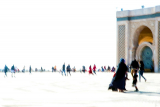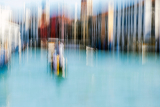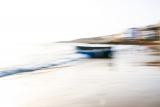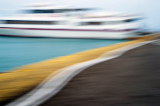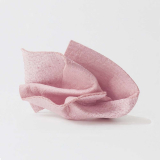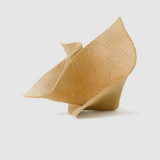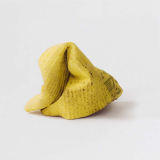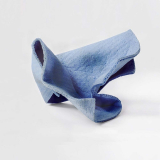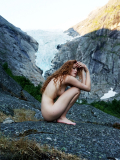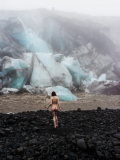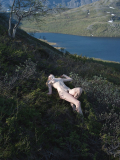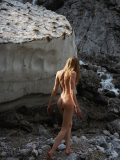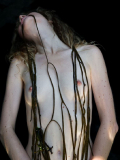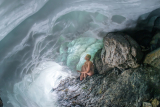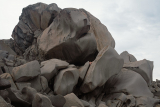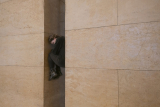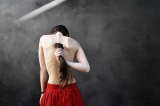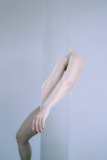Works
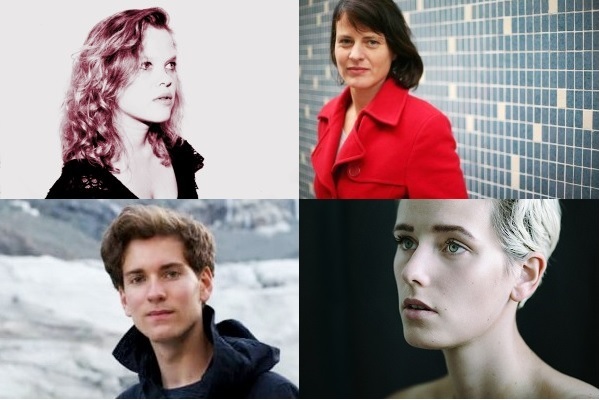
deKoe Gantar Vogt Zalenga
In its second exhibition of the new year, the Ingo Seufert Gallery brings together four positions in contemporary photography. A total of 19 photo prints by Käthe deKoe (Munich), Eva Gantar (Vienna and Feldkirch/Vorarlberg), Korbinian Vogt (Munich) and Laura Zalenga (Rotterdam) can be seen.
31 January 2024 – 17 February 2024
On January 31 at 6 pm all are invited to the opening reception at the gallery. The artists are present.
The following works are presented in the show:
deKoe Gantar Vogt Zalenga
In its second exhibition of the new year, the Ingo Seufert Gallery brings together four positions in contemporary photography. A total of 19 photo prints by Käthe deKoe (Munich), Eva Gantar (Vienna and Feldkirch/Vorarlberg), Korbinian Vogt (Munich) and Laura Zalenga (Rotterdam) can be seen.
Munich-based artist Käthe deKoe (b. 1984) has become a fixed term to the public, specifically through her image-based reporting of Munich’s pop and rock concerts in the music magazine LAXmag. To her, landscape photography means primarily focusing on an inspection and interpretation of the urban and rural areas in and around Munich. However, four previously unseen works from 2017 to 2023 are dedicated to Venice and Morocco, whereby the motion blur created during the recording with the camera only provides peripheral information that enables a geographical location of the selected motif. On the other hand, the viewer fabricates archetypal views, in comparison with the real circumstances and reconstructs – as it were – mental images, fed by knowledge and experience. These reconstructions are ultimately fantasy visions, which consequently do not require a “likeness” or an empirical verification. Whether the English Garden, an S-Bahn mezzanine, or the foothills of the Alps deliver the concrete motive remains irrelevant. Rather, the visual and structural properties shove themselves to the foreground. The likeness suggests the image and becomes independent as an autonomous work of art, which itself – in turn – can be charged with the viewer’s memories and emotions, with the aim of a proactive confrontation between reality and photographic reality.
For the architect and photographer Eva Gantar, the transitory moment and the shift in space and time, influenced by the type of photograph, are an essential part of her work. With sensitivity and humor, she draws our attention to absences, objects and places with peculiar synergies and the unusual moments that arise from them. Her new series “Squeeze me tight” are temporary objects consisting of thirty kitchen sponges. They were removed from their surroundings and made into protagonists of her photographic works. Left lying there as expressed, often unnoticed, they were collected in kitchens, sanitary rooms of apartments, studios, hotels, restaurants and other public institutions and photographed with a medium format camera. Sensitively and seismographically, they reflect the energetic state of mind of their creators and are a literal expression of the fact that every action, no matter how subtle, leaves its mark. “As I review the events of my past life I realize how subtle are the influences that shape our destinies.” (Nikola Tesla).
The six works by the young photographer Korbinian Vogt represent his central image theme, the female nude in front of a wildly romantic natural backdrop. Together with his female models, he hikes through the carefully selected, mostly Nordic locations and then photographs them as nudes in front of breathtaking mountain backdrops or in inhospitable ice landscapes. The urgent inevitability of this motif makes it clear that it‘s ultimately virulent inner images that the artist visualizes. That aesthetically exaggerated truth of representation lends his photographic works a magic beyond authenticity that the viewer cannot escape, they “brace themselves against being lost and thereby open up a visual level full of little miracles. His miracles — between soliloquy and tales ”(Olaf Unverzart).
Equipped with an inexhaustible wealth of ideas, Laura Zalenga incessantly questions herself, translating sensitivities, physical changes and injuries as well as spatial situations into an individual visual language that is given additional atmospheric density with the help of digital image processing. The artist avoids the danger of falling into irrelevant, surreal bizarre scenes by creating beguiling picture ideas to which the chosen means are naturally subordinate. Portraits and self-portraits are juxtaposed with narrative stagings in the great outdoors — or in front of a monochrome gray wall. All in all, Zalenga’s works are characterized by a calm mood and clear visual architecture. She herself describes her style as „silently passionate“. The scenes, often rich in contrasts and bathed in cold colors, are reminiscent of the visual aesthetics of Tim Burton’s films as well as the style of the Twilight film series. Zalenga was an Adobe Creative Resident in 2018/2019. Four of the six available prints can be seen for the first time as part of the exhibition, with the artist staging herself as her own model in a spectacular landscape or allowing her own body to become the sculpture-like subject of the picture.
